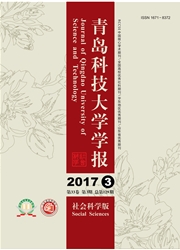

 中文摘要:
中文摘要:
山东沿海城市带主要涉及青岛、烟台、威海、潍坊、日照、滨州、东营、济南、淄博九个城市,实现九市地方政府的跨政区合作、优势互补、共同发展是促进山东沿海城市带以及整个山东省经济、社会高效发展的有效手段。山东沿海城市带城市主要通过“核心一外围”式和平级城市间合作两种模式在产业、交通、旅游、生态环境以及科技人才方面:开展合作,其主要合作机制分为制度化合作机制、区域性发展规划以及行政协议三种类型。各城市的合作取得了一定的成效,但仍然存在跨政区合作的组织机构缺位、跨政区合作的政策工具残缺、跨政区合作参与主体单一、跨政区合作常态化程度低等问题。今后应该从健全合作的组织机构、完善跨政区合作治理工具、扩大跨政区合作的参与主体、保证跨政区合作的常态化等方面着手以促进山东沿海城市带的区域协调化与经济一体化发展。
 英文摘要:
英文摘要:
It' s a trend to balance development among regions and realize the integration of regional economy at home and abroad. Shandong Coastal Urban Belt (SCUB) mainly includes 9 cities, which are Qingdao, Yantai, Weihai, Weifang, Rizhao, Binzhou, Zibo, Dongying and Jinan. It is an effective way to promote the economic, social development of SCUB to realize the local governments' cooperation cross administrative region, complementary advantages and common development. There are two modes in cooperation of SCUB, including "Core-Periphery" mode and flat gradient cooperation mode, and the cooperation areas involve industry, transportation, tourism, ecological environment, as well as the talents of science and technology. The main mechanism of cooperation is mainly divided into three types, which are the institutionalized cooperation mechanism, the regional development planning and the administrative agreement. The cooperation of SCUB has obtained a certain achievements, but there are still some problems, such as the absence of organizations, simplification of participants, and low degree of normalization etc.. So we should improve organizations, perfect governance tools, expand the participations, and ensure the normalization to promote the regional harmonization and the economic integration development of SCUB.
 同期刊论文项目
同期刊论文项目
 同项目期刊论文
同项目期刊论文
 期刊信息
期刊信息
